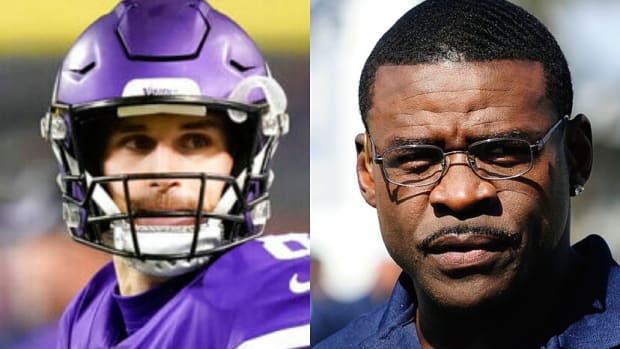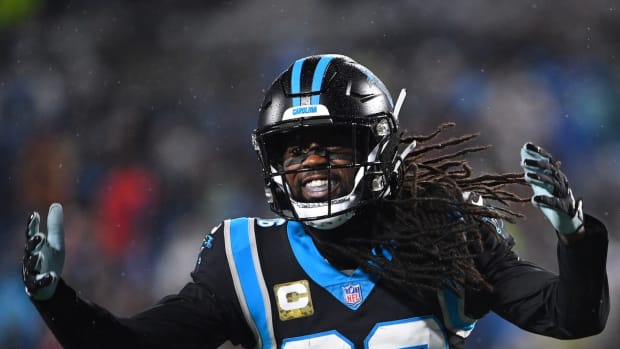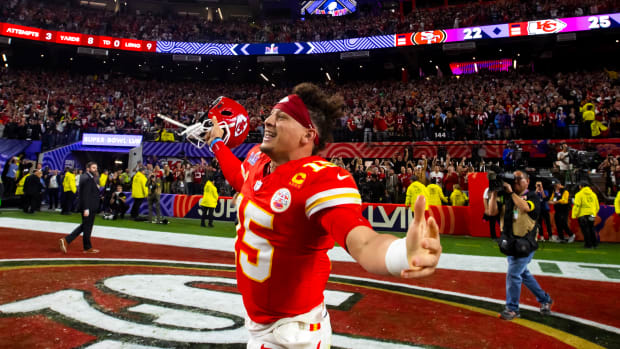Analyzing the Shift From Player Agent to Team Exec
The New York Mets have named Brodie Van Wagenen as their new general manager, reaching across the negotiating table in hiring an agent to represent the team in dealings with, among others, agents. He played baseball at Stanford, became co-head of Baseball at CAA, and secured record setting guaranteed contracts for players such as Yoenis Cespedis ($138 million with the Mets) and Robinson Cano ($240 million with the Mariners). Beyond Cespedis, Van Wagenen’s clients on the Mets have included Jacob deGrom, Noah Syndergaard and, well, Tim Tebow. Indeed, one way to look at the hire is the Mets conceding: “If you can’t beat ‘em, join ‘em.”
Van Wagenen’s path, as well as that of the Mets, is not unknown territory. Jeff Moorad, the founder of the Moorad Center for the Study of Sports Law at Villanova Law School, was a longtime successful agent—his clients included Manny Ramirez, Mo Vaughn and Ivan Rodriguez—who transitioned to becoming CEO of the Diamondbacks and then acquiring an ownership stake in the Padres. Former baseball player Dave Stewart was also in the agent business before switching sides to the Diamondbacks from 2014-2016.
NBA teams have, in recent years, often looked to the player side often for key management positions in their organization. Top NBA executives hired after extensive backgrounds as agents have included Lakers general manager Rob Pelinka, Warriors general manager Bob Myers, Suns president Lon Babby and Pistons president Arn Tellem.
TAYLER: Who is New Mets GM Brodie Van Wagenen? An Unorthodox Choice for a Miserly Franchise
Turning to the NFL, I was one of the first agent-turned-team executives in the professional sports landscape, hired by the Packers in 1999, with my story below. Prior to my hiring, the Raiders hired longtime agent Bruce Allen (now president of the Redskins) in 1995. And since I was hired the Bears hired former agent Cliff Stein, who is still with the team. The Jets hired Ari Nissim, an agent both before his stint with the Jets and after, now working for Jay-Z’s Roc Nation. And Nissim’s former boss at the Jets, current Dolphins general manager Mike Tannenbaum, was an agent in his time between those two teams, representing mostly coaches.
The career path from agent to team (and sometimes back to agent) is now a tried and true one with proven success—and one I highly recommend.
I represented NFL players in two different stints—for ProServ and Woolf Associates—sandwiched around serving as general manager for the Barcelona Dragons. In my second stint at Woolf Associates, I represented what was to be the watershed client of my career: Ricky Williams, the exhilarating running back from the University of Texas. I spent two years cultivating my relationship with Ricky, fighting off all of the top agents trying to pry him away, and soon after he won the Heisman Trophy, I signed him officially make him my client. Until he wasn’t.
As we traveled together, I soon noticed people hanging around Ricky. When I confronted him about them, he said they worked for Master P, a rapper/entrepreneur who was starting a sports agency that Ricky wanted to be involved with. I asked where that left me. Ricky said he wanted me to work with Master P and negotiate the contracts for all his clients. “Me and P?” I asked. “Yes” Ricky replied.
Amid this career-changing news, I was also receiving calls from the Green Bay Packers, where my only client at the time was third-string quarterback Matt Hasselbeck. I called back, and the team informed me that coach Mike Holmgren had left for the Seattle Seahawks and took with him Mike Reinfeldt, who negotiated all player contracts and ran business operations for the Packers. The team asked if I wanted to switch sides.
That question initiated a series of actions including weighing a position with Master P versus the Packers; talking to my wife about moving to Green Bay (we looked it up on a map); and asking the Packers “Don’t take offense, but do I have to move here to do this job?” (the team answered “No offense taken, but yes.”). The central question I had to answer, though, was Do I want to move from the player side to the team side?
2019 NFL Team Needs, Part II: Cowboys, Patriots, Steelers and More
I had thought about moving to that side someday perhaps later in my career, but here was an opportunity with a legacy franchise—albeit in not the most geographically desirable location—and prophetic timing. And with a young family, it felt right to transition from constantly chasing players to a more stable environment on the team side.
Thus, I decided to do it; I switched sides.
When I asked Packers general manager Ron Wolf why he chose me for the position, he was very kind in complimenting my knowledge of contracts and the salary cap, but it truly struck me when he said, “And we really need to get more agent-friendly; hiring a former agent will help that.” Wolf had begrudgingly realized the increasing importance of agents in doing business in the NFL and the need to have healthy and developed agent relationships.
And after a decade on the management side, I can attest that the agent background was invaluable for my role with the team. I was negotiating the same contracts as before, but doing it from the other side of the table. I was able to put myself in the shoes of my agent adversary and know exactly where they were coming from, having come from the same place myself hundreds of times. I anticipated all the arguments—the good, the bad and the delusional—and had empathy for their position. We could easily move past the posturing to the key issues of the negotiation, often guaranteed money and cash flow of the deal.
And while the agent community predictably commented that I had moved to the “dark side,” I had many tell me they truly appreciated having a former “one of them” controlling the player purse strings of the Packers. I knew their plight; I had been there, imploring teams to help out my clients in any way possible. I also took it upon myself to educate agents on the challenges on the team side and how different it was to—as an agent—worry about individual players on different teams (I likened agents to fantasy football managers) rather than worrying about constantly-changing and fluid roster management.
I have seen criticism of both the Mets and Van Wagenen for the move from media and pundits worried about his former clients’ privileged and confidential information being used against them. Legal experts have even weighed in to suggest Van Wagenen has breached his fiduciary duty to his clients by switching sides and the Mets have committed tortuous interference by hiring Van Wagenen. To these criticisms, I say, as someone with a decade on each side … please.
NFL Mock Draft 2.0: Nick Bosa to San Francisco, Quarterbacks to Tampa Bay and Denver
My strong sense is that former Van Wagenen clients such as deGrom and Syndergaard feel much more comforted than threatened by the fact their friend and former agent is on the other side of the table, especially as opposed to a management lifer. It is this “dark side” mentality that infects player-management relations more than the actual reality of the sports business.
That reality, far removed from theories about breaches of confidentiality, is that the agent background prior to management is an advantage to both the team and its players. The fact that the agent knows “secrets” from the other side is part of the value-add brought to the position, not something to be seen as sinister plot to foil players’ interests. Indeed, were there valid criticisms of the agent-turned-team executive model, wouldn’t we have seen several NFL, NBA and MLB teams negatively affected by this? (And there will be many more.)
Listen, conflicts in the sports business, as in many businesses, are rampant. The reality is that sometimes the most talented people with the most aptitude for certain positions come from the other side of the negotiating table. That prior experience on the opposing side gives extraordinary insights and background that benefits and facilitates relationships with the other side. Lawyers switch sides all the times, whether prosecutors-turned-defense lawyers (or vice versa) or attorneys transitioning from representing labor to management (or vice versa). The same is true in business, with negotiations happening often between colleagues who once negotiated for the other side. Further, business leaders commonly ascend up the ladder to manage—or discipline or fire—those they once worked for or with. It happens; this is the reality of business, not theories about potential conflicts.
As with any new hire, no one knows whether Van Wagenen will be a great general manager or a lousy one. However, the background that he brings to the position has, to me, as much value as one from scouting, coaching or any other background that can be brought to bear. Criticisms of the move ignore successes from the same model in other sports and are out-of-touch with the realities of sports business and business in general.




































